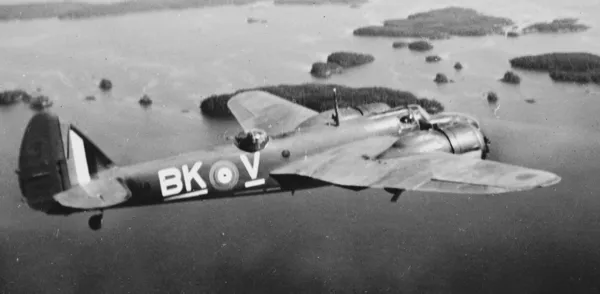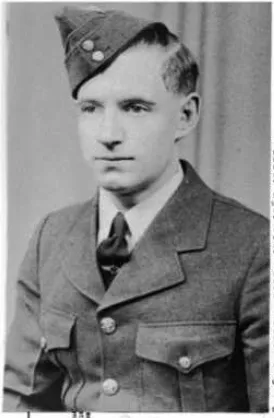Bristol Bolingbroke

Fairchild Bolingbroke Mk. IV, RCAF (Serial No. 9118), coded BK-V, No. 115 (Bomber Reconnaissance) Squadron, Patricia Bay, British Columbia, 1942.
The Bristol Fairchild Bolingbroke was a maritime patrol aircraft and trainer used by the Royal Canadian Air Force during the Second World War. Built by Fairchild-Canada, it was a license-built version of the Bristol Blenheim Mk IV bomber.
In 1935, the British Air Ministry issued Specification G.24/35 to procure a coastal reconnaissance/light bomber to replace the Avro Anson. Bristol proposed the Type 149, based on its Blenheim Mk I, with Bristol Aquila engines to give greater range. While the Air Ministry rejected this proposal, a Blenheim Mk I, retaining its Mercury VIII engines, was converted as a Type 149 (Blenheim Mk III) for the general reconnaissance role.The nose was lengthened to provide more room for the bombardier, with the upper left surface of the nose being scooped out to maintain pilot visibility during takeoff and landing.
The longer range also fulfilled a Canadian requirement for a maritime patrol aircraft. Consequently, Fairchild Aircraft Ltd. (Canada) of Quebec started production of the Blenheim Mk IV as the Bolingbroke (the originally intended name for the Blenheim IV). This type was nicknamed the "Bolly". After a small run of aircraft constructed to British specifications, as the Bolingbroke Mk I, Fairchild switched production to the Bolingbroke Mk IV with Canadian and American instruments and equipment. These versions also included anti-icing boots and a dinghy. One of the early Mk IV variants was the Bolingbroke Mk IVW which was powered by two 825 hp (615 kW) Pratt & Whitney SB4G Twin Wasp Junior engines. Incapable of maintaining altitude on one engine, the normal bomb load was reduced to 500 pounds on these aircraft to compensate for the low engine power. The most-produced variant was the Bolingbroke Mk IVT trainer, of which 457 were completed. A total of 626 Bolingbrokes were produced. Wikipedia
 Bolingbroke - Kestrel Publications
Bolingbroke - Kestrel Publications
CASPIR Aircraft Groups:
RCAF On Strength (626), RCAF 400 Squadron (3), Canadian Aircraft Losses (43)Bolingbroke Mk. IV 9114
Category C damage at Yarmouth, NS at 13:19 on 7 January 1942, probably on delivery to storage there. Delivered to stored reserve. Noted on 3 February 1942 as on the books of No. 4 Repair Depot at Scoudouc, NB. Issued from storage on 1 June 1942, to No. 119 (BR) Squadron at RCAF Station Sidney, NS. To Western Air Command on 20 June 1942,for use by No. 147 (BR) Squadron which formed at RCAF Station Sea island, BC in July 1942. Reported missing from Sea Island on 6 September 1942. The crew of Flight Sergeant D. Moore, Flight Sergeant J. Duffy and Flight Sergeant C. Child were presumed dead.
1941-12-30 Taken on Strength Eastern Air Command 2019-08-20
1942-September-06 Accident: 147 Squadron Loc: Unknown Names: Child | Duffy | Moore
1942-10-06 Struck off Strength Struck off, reduced to spares and produce 2019-08-20





 Canadian Virtual War Memorial
Canadian Virtual War Memorial Commonwealth War Graves Commission
Commonwealth War Graves Commission Find-A-Grave.com
Find-A-Grave.com Library and Archives Canada Service Files (may not exist)
Library and Archives Canada Service Files (may not exist) Victoria, British Columbia
Victoria, British Columbia

 Wikipedia Bolingbroke Bomber
Wikipedia Bolingbroke Bomber Harold A Skaarup Web Page
Harold A Skaarup Web Page Bolingbroke Bomber WWII
Bolingbroke Bomber WWII